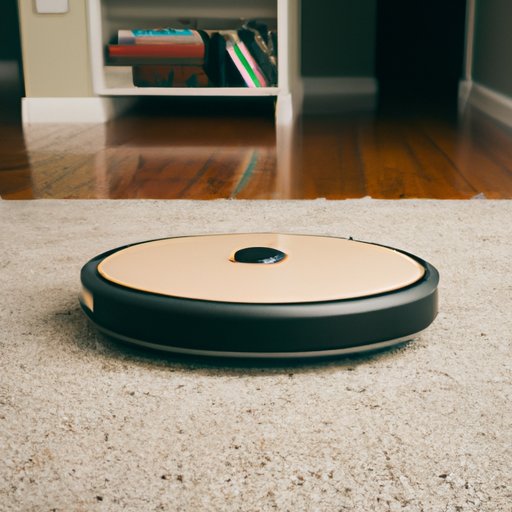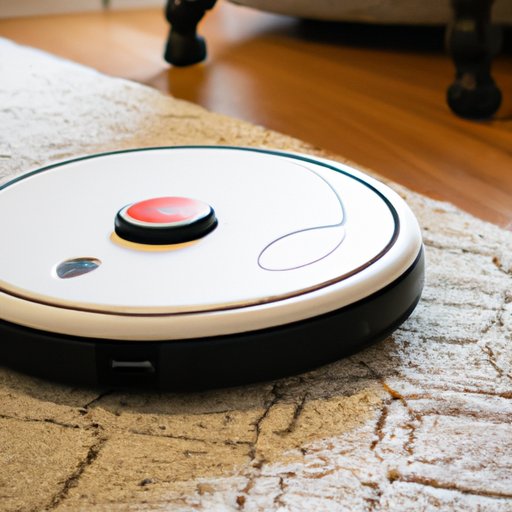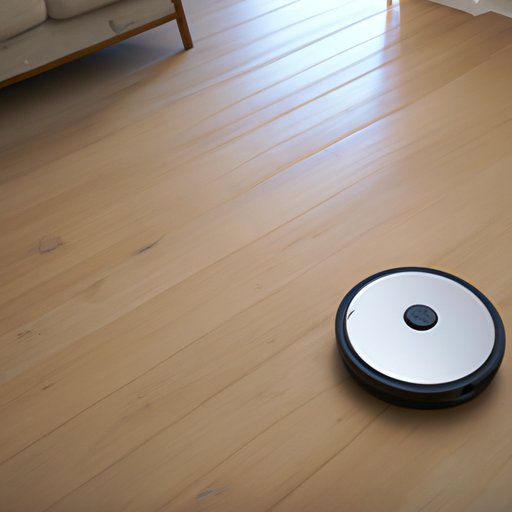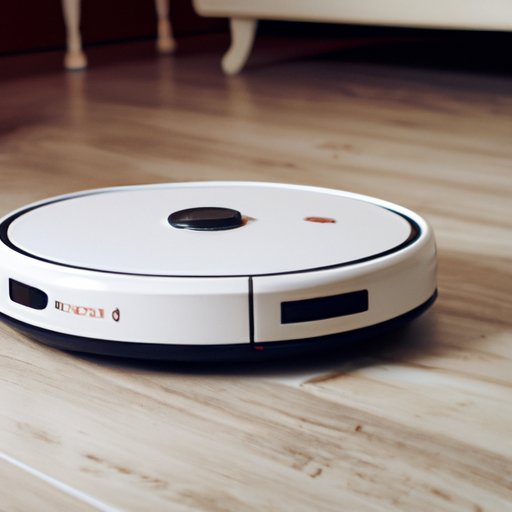Introduction
With advancements in technology, it has become easier than ever to keep your home clean with the help of robot vacuums. These devices use sophisticated mapping systems to navigate around your home and provide an efficient and thorough cleaning experience. In this article, we will explore how robot vacuums map your house and what you need to know about them.

Exploring the Technology: How Robot Vacuums Map Your Home
Robot vacuums are intelligent cleaning machines that use sensors, lasers, or cameras to map out your home. The mapping system allows the robot vacuum to identify obstacles, furniture, and walls so that it can move around your home without bumping into anything. Different types of mapping technologies used by robot vacuums include infrared sensors, camera-based systems, and laser-based systems.
Infrared sensors are used to detect objects in a room and create an image of the entire area. This type of mapping is the most basic and is typically used on entry-level robot vacuums. Camera-based systems use visual data to map out your home. This is a more sophisticated approach as it provides a detailed view of the environment. Laser-based systems use a laser beam to scan the area and generate a 3D map of the environment. This is the most advanced type of mapping technology and is typically used on high-end robot vacuums.
The advantages of using robotic mapping include improved navigation, increased efficiency, and better cleaning performance. Robot vacuums are able to accurately map out the layout of your home so that they can avoid obstacles and furniture. This helps them to move around more efficiently and clean more thoroughly. In addition, robotic mapping allows robot vacuums to remember previous routes, which further improves their efficiency.
However, there are some drawbacks to robotic mapping. For example, robot vacuums may struggle to map out complex environments with lots of furniture and obstacles. Some models may also require frequent calibration to ensure accuracy. Additionally, robotic mapping can be expensive, as it requires sophisticated hardware and software.

Mapping Out Your Home: What You Need to Know About Robot Vacuums
Before setting up a robot vacuum, there are a few steps you should take to ensure optimal performance. First, make sure that the area is clear of any obstacles such as furniture, toys, or wires. This will help the robot vacuum to move around easily and map out the environment more accurately. Next, remove rugs and carpets, as these can interfere with the mapping system. Finally, check that the robot vacuum is charged and ready to go.
When mapping your home, there are some common challenges you may encounter. For instance, the robot vacuum may have difficulty navigating around tight corners or under furniture. Furthermore, it may struggle to map out large rooms with multiple obstacles. To optimize the mapping process, you can set up virtual boundaries to limit the area that the robot vacuum can access. Additionally, you can use floor plan markers to help the robot vacuum identify different areas of your home.
It’s also important to remember that robot vacuums require regular maintenance and troubleshooting. Make sure to regularly check for debris, dust, and other obstructions that can interfere with the mapping system. In addition, if the robot vacuum encounters any issues, you should refer to the user manual for troubleshooting instructions.
A Guide to Understanding How Robot Vacuums Work to Map Your Home
To understand how robot vacuums map your home, it’s important to know the key components of the mapping system. The core components include sensors, processors, and algorithms. Sensors are used to detect objects and obstacles in the environment. Processors analyze the data collected by the sensors and generate a map of the environment. Finally, algorithms are used to determine the best route for the robot vacuum to take.
There are several types of mapping algorithms used by robot vacuums. Random mapping is a simple algorithm that uses a random approach to explore the environment. Path-based mapping is another algorithm that follows a pre-defined path to map out the environment. Finally, adaptive mapping is the most sophisticated type of algorithm, as it adjusts its route based on the environment.
Once the mapping system has been set up, the robot vacuum will begin to explore its environment. Using the sensors, the robot vacuum will detect objects and obstacles in the environment and generate a map. This map will then be stored in the robot vacuum’s memory, allowing it to remember the layout of your home. As it moves around, the robot vacuum will update the map and adjust its route accordingly.

Cleaning Up with Technology: How Robot Vacuums Map Your House
Robot vacuums offer several benefits in terms of convenience and efficiency. By automating the cleaning process, they save you time and effort. In addition, they are able to navigate around tight corners and under furniture to reach hard-to-reach areas. Furthermore, they can be programmed to clean specific areas at certain times, making them ideal for busy households.
However, there are some potential drawbacks to consider. For instance, robot vacuums can be expensive, especially those with advanced mapping capabilities. Additionally, they may struggle to map out complex environments with lots of furniture and obstacles. Finally, they require regular maintenance and troubleshooting to ensure optimal performance.
To get the most out of your robot vacuum, it’s important to choose one that meets your needs. Ask yourself important questions such as whether or not it has the necessary mapping capabilities and what type of battery it uses. Look for features such as anti-collision sensors, virtual boundaries, and remote control. Finally, make sure to maintain and troubleshoot your robot vacuum regularly.
Conclusion
Robot vacuums are becoming increasingly popular due to their ability to map out your home and provide a convenient and efficient cleaning experience. While there are some potential drawbacks to consider, such as cost and maintenance requirements, the benefits far outweigh them. When choosing a robot vacuum, make sure to ask yourself important questions and look for features such as anti-collision sensors and virtual boundaries. With proper maintenance and troubleshooting, you can ensure that your robot vacuum is running optimally and providing a superior cleaning experience.
(Note: Is this article not meeting your expectations? Do you have knowledge or insights to share? Unlock new opportunities and expand your reach by joining our authors team. Click Registration to join us and share your expertise with our readers.)
